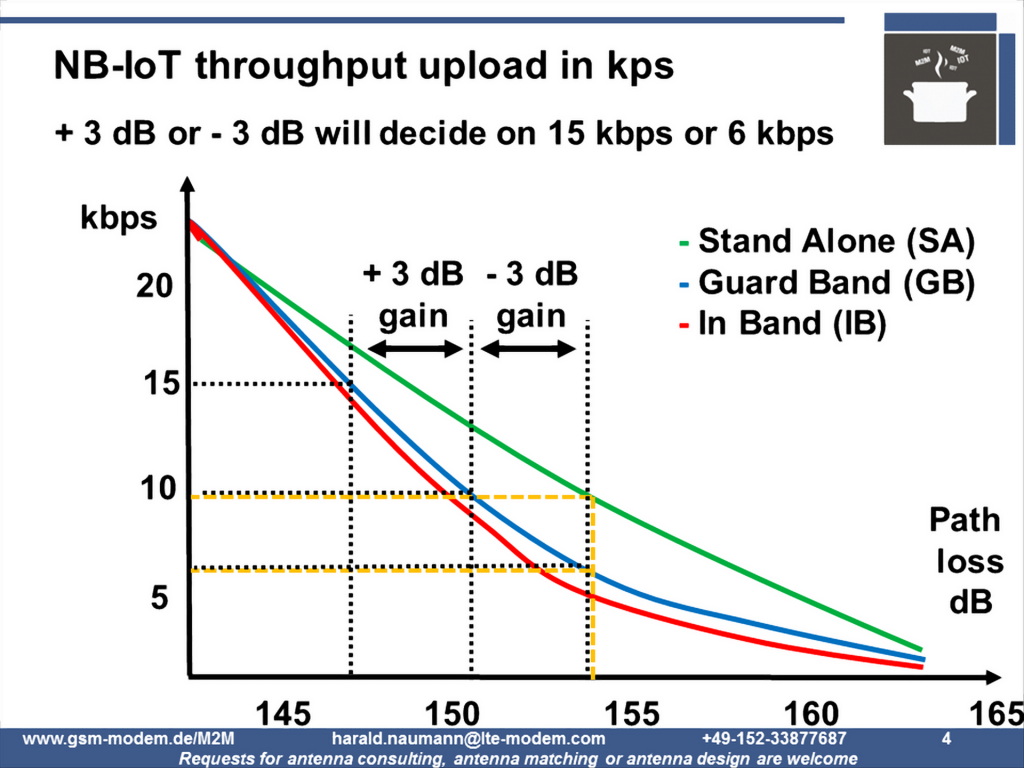Because a picture is worth a thousand words, as promised here is the NB-IoT throughput table in a graph.
At a 144 dB link budget, we will reach 21 kbps. If the link budget is even higher, the transmission power will be reduced. The 3 coloured curves show the 3 operating modes of NB-IoT. The standalone curve exists only in theory. In-band mode and Guarded Band mode are common. NB-IoT rewards +/- 3 dB system gain with 6 kbps to 15 kbps. This plus or minus 3 dB gain is in the hands of the IoT developer. The higher the speed, the lower the energy consumption. Everyone is talking about a 10 year battery life. At 151 dB LB is “symbolically” 5 years. At 154 dB it will be 2.5 years but at 148 dB it will be 10 years from the same battery. This range from 2.5 years to 10 years is possible depending on the quality of the design. The battery is often more expensive than the radio module and so it makes sense to take the time and trouble to optimize the antenna in order to maximise the battery life. In the next few slides we will go deeper into antenna design.
Has this article piqued your interest? Do you plan your own LPWAN IoT device? Do you plan to deploy IoT devices with embedded antennas? Do you have an IoT prototype and need to optimise the design or minimise the price? If you have answered YES to any one of these questions then please do not hesitate to drop an email to harald.naumann (at) lte-modem.com and to ask for a proposal or some engineering services to make your IoT idea a cost-effective reality.
